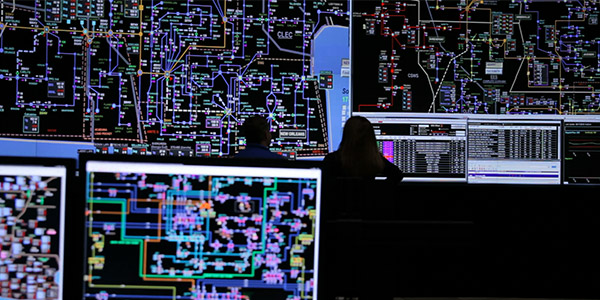By Amanda Durish Cook
The MISO Planning Advisory Committee will vote by email on a DTE Energy proposal to broaden the scope of the RTO’s effort to create new rules allowing storage projects to solve transmission needs.
DTE’s motion proposes that stakeholders and the PAC recommend that MISO include a path for non-transmission owners as well as TOs to own and operate storage-as-transmission assets (SATA). The motion will appear on an email ballot April 22-26.
In developing the rules, MISO determined that only registered TOs should be eligible to own SATA in order to avoid introducing complexities around cost recovery, particularly related to how non-TOs would be compensated for providing transmission services.
DTE says non-TO SATA should be permitted to bypass the interconnection queue and connect to MISO’s transmission system via newly conceived storage interconnection agreements.
To be eligible to secure a storage interconnection agreement, DTE proposes that resources must resolve a transmission-reliability issue identified in the annual Transmission Expansion Plan (MTEP) process, “satisfy the same performance criteria” as other SATA in the MTEP analyses, and “be operated strictly at the direction of MISO’s transmission-reliability function to address such issues.”
DTE’s Nick Griffin said the motion will close an “equity gap” in MISO’s first SATA filing with FERC. Absent DTE’s provision, he said, the SATA ruleset would create preferential treatment for TOs and “create barriers for entry for storage.”
Griffin said the motion does not yet address cost recovery.
In a complicated interpretation of MISO’s stakeholder process, the Steering Committee last month directed the PAC to revisit the possibility of non-TOs owning SATA in response to DTE’s request. (See MISO Planning Committee to Reconsider Non-TO Storage as Tx.) Some stakeholders were concerned that PAC leadership prematurely suppressed conversation on DTE’s proposals by not holding a vote to gauge whether stakeholders thought the idea warranted further debate.
MISO has said stakeholders agreed before drafting the SATA rules that they would neither address non-transmission alternatives (NTAs) nor create an entirely new cost allocation as a part of the SATA policy development.
But MISO Director of Planning Jeff Webb said the RTO’s existing process to consider NTAs in transmission planning may cover what DTE seeks.
“As a general matter, we do not require non-transmission alternatives to complete the generator interconnection process unless the asset is a generation facility seeking access to the market,” Webb explained.
Not that Simple, Stakeholders Say
Entergy’s Yarrow Etheredge pointed out there is no structure in place for MISO to assume functional control over assets other than transmission. She said DTE’s proposal wasn’t as simple as minor Business Practices Manual or Tariff changes.
Great River Energy’s Jared Alholinna agreed that DTE’s motion would create a “gray area” around what is and isn’t transmission and could ultimately undermine the FERC definition of transmission.
“This is being characterized as quite narrow, but it really balloons out,” American Transmission Co.’s Bob McKee said.
Griffin said non-TO SATA could have similar treatment to a generator under a system support resource agreement, in which MISO dictates that assets be available for dispatch.
“We think with a few minor BPM and Tariff changes, we could achieve analogous treatment,” Griffin said.
But Etheredge said an SSR-style treatment still lacks the automatic controls that MISO has established with its TOs.
Xcel Energy’s Drew Siebenaler said the motion could create the discriminatory treatment DTE claims to combat because the proposal names a special interconnection path meant only for storage devices.
“I would view that as a discriminatory filing,” Siebenaler said.
DTE coming forward without a defined cost allocation was problematic as well, added Xcel’s Carolyn Wetterlin. She said she had never heard of a MISO project gaining approval without first having an established cost allocation method.
MISO’s Environmental sector took the discussion as an opportunity to call out the SATA proposal as too limiting in the first place. Clean Grid Alliance’s Natalie McIntire said the current plan ignores the full spectrum of storage capabilities. She said MISO has rushed the first SATA proposal and “unreasonably” limited the scope of a possibly “precedent-setting” ruleset.
Webb acknowledged that MISO’s “first stage” SATA rules are intentionally narrow so that storage doesn’t have to scale the approximate three-year interconnection queue before being eligible to solve a transmission need.
“We wanted to clear that barrier first,” he said.
Webb promised MISO stakeholders future Tariff proposals that would allow expanded and multifaceted storage use in the footprint.
The PAC will hold a May 15 conference call to discuss refinement of the SATA filing and announce the ballot results on DTE’s motion.
MISO hopes to file the new rules with FERC in June or July. One SATA project is currently moving through MTEP 19 in the hopes that rules are in place by the end of the year.





